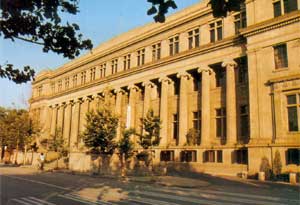Memories of the city
The Shanghai authorities — as in Beijing — are keen to preserve what they can of the shikumen, as the large tracts of Shikumen houses, dwellings for over 60% of Shanghainese in the past dubbed as the "living fossils" of Shanghai-style residences, are closely bound up with the local customs and culture. However, modern sanitation and habitation standards dictate that many of them be demolished.
But protection of the local environment, and improvement of living conditions can be combined to keep the old residents to stay and to preserve the old shikumen lifestyle and their cultural memories.
Western-style Buildings in Tianjin: Watching History Pass by
|
|
Western-style buildings are a unique feature of the port city of Tianjin. There are more than 1,000 such buildings in various styles. Because of them, Tianjin is praised as a "World Architecture Museum." Most of these buildings are located on the banks of the Haihe River, where nine foreign concessions were set up in the 19th century.
There are 230 buildings in British, French, Italian, German, Spanish and other styles in the Five Avenues area. The owners of these buildings were mostly senior officials, military officers and businessmen. The houses are not high and dominating, but modest, shaded by plants from the gaze of passers-by. For the sake of privacy, these houses are not surrounded by fences, but by walls, which add grace and serenity to the area.
What Western-style buildings brought to Tianjin was not only novel types of architecture, but also the Western thinking mode, lifestyle and values. Western and local cultures conflicted at first, but then blended gradually. The Western-style buildings were the window through which young people observed and learned Western civilization at that time. Many famous politicians and scholars of Tianjin origin grew up in those buildings.
Stilt Houses of Chongqing: Memory of the River
Because of Chongqing's hilly terrain, almost all the buildings in the city are built on slopes. Chongqing is situated at the confluence of two rivers (the Yangtze and the Jialing), and on the river banks there are many houses supported on bamboo or wooden stilts. They are called stilt houses (diaojiao lou).
 0
0 







